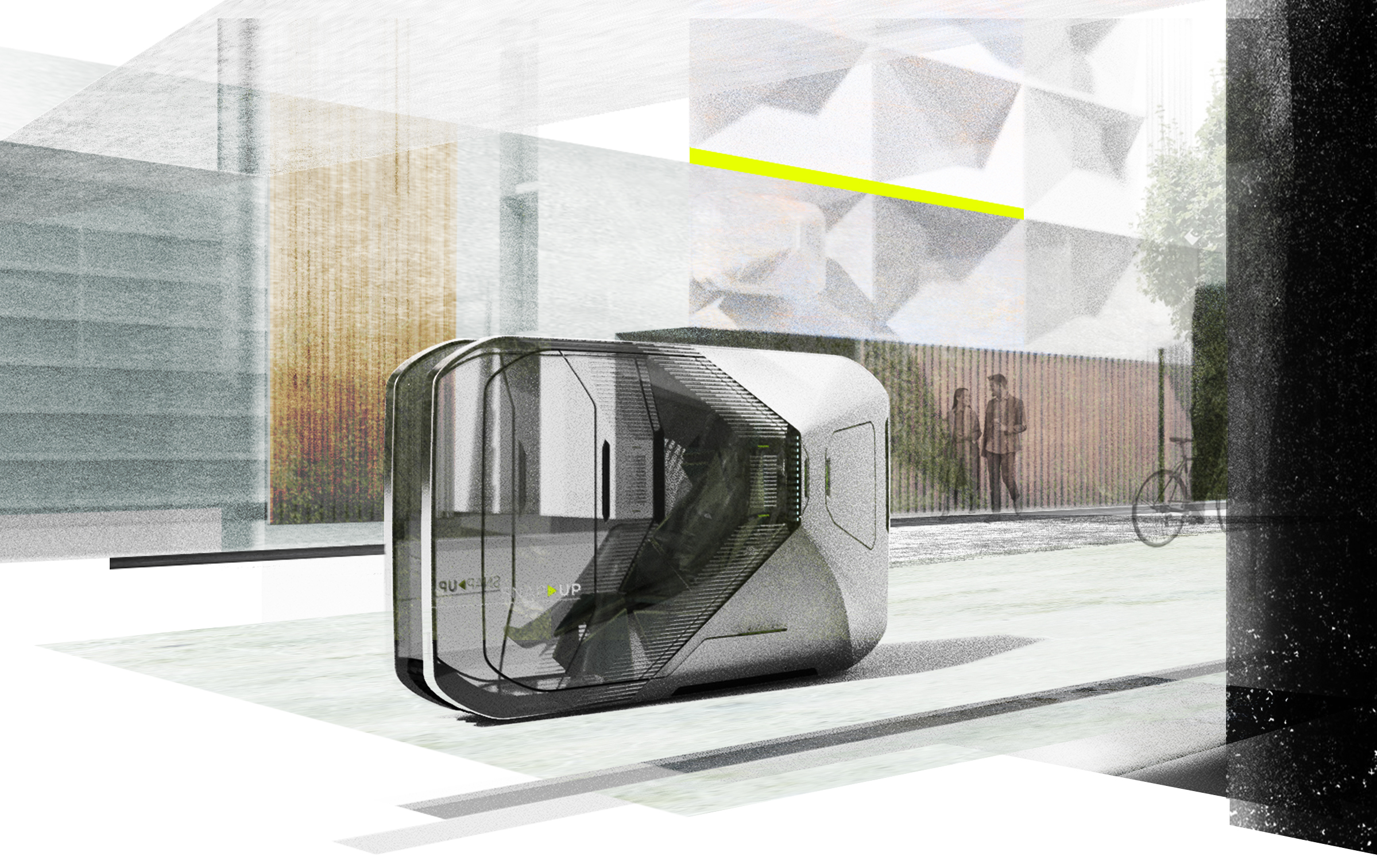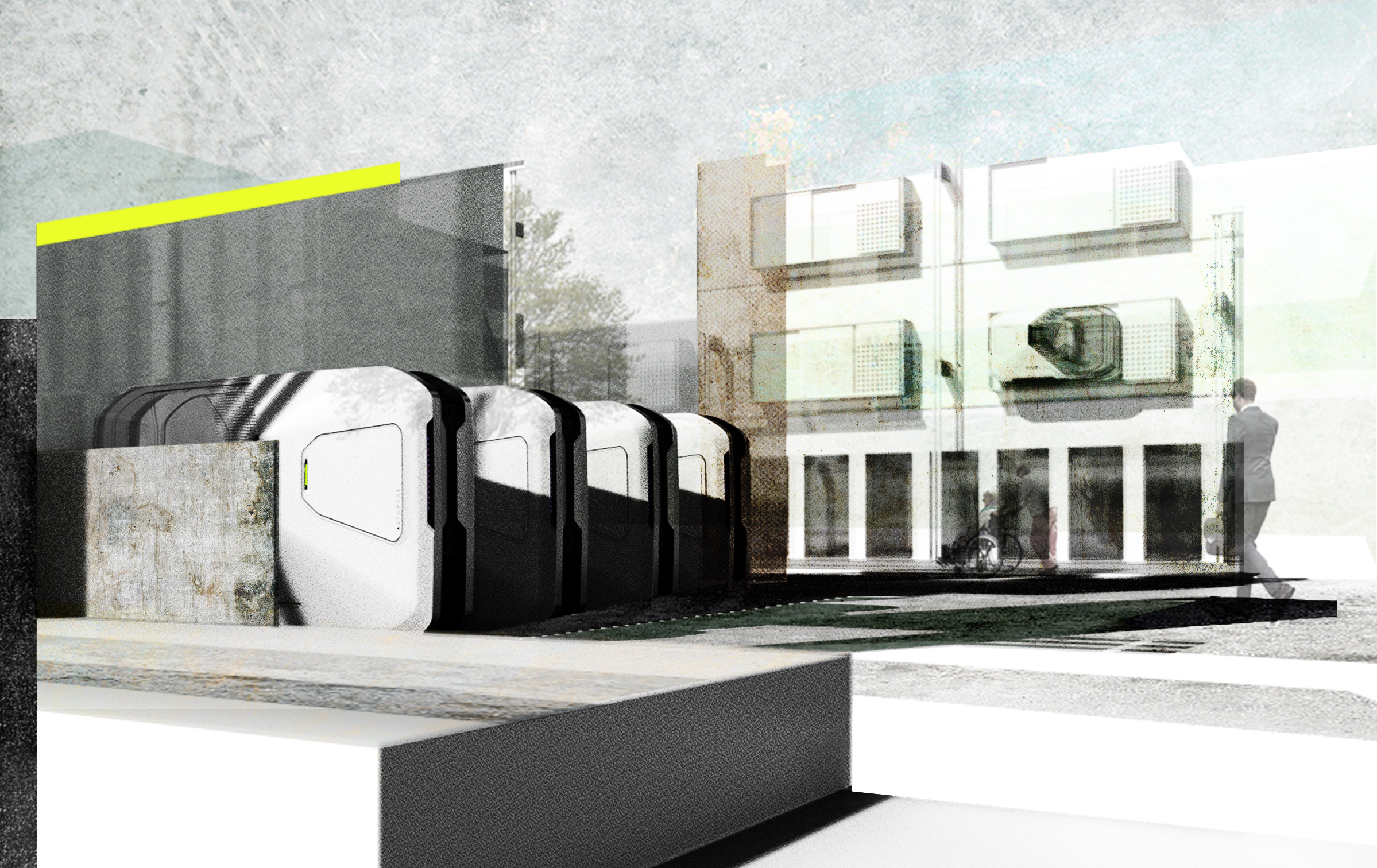Snap Up: An Autonomous Narrow Car

Lars Riemann from Pforzheim, Germany, designed an autonomous car called “Snap Up”. This vehicle has a very narrow footprint and therefore finds space inside the building because you can latch it to save space.
Billboard
Skyscrapper
Halfpage
The Snap Up car
Lars Riemann’s design intends densely populated urban areas such as Seoul, where there are many high-rise buildings. You can stack Snap Up cars vertically on the street, but also attach them to the facade of residential buildings. This attachment expands the living space inside a house.
The space-saving car has an all-round glazing to enhance views and would suit for lower-speed inner-city journeys, while one passenger at a time can occupy the vehicle. The idea is that the Snap Up can also “snap” onto different public transportation services like hyperloop trains or future air mobility solutions. Thus, the car would facilitate multimodal transportation. It would also create a seamless travel experience and avoiding the need for transfers between different types of transport.
The design by Lars Riemann, student at Hochschule Pforzheim in Germany, has a rubber chain so that the vehicle can run on different terrains. It has a low soil impact, which enables the car to drive over grass. This, the designer hopes, might lead to a new approach to urban planning, where planers favour green spaces and lawns over asphalt surfaces.
Using commuting time sensibly
In his pitch, Lars Riemann explains: “While a car spends more than 95 per cent of its lifetime parked, it also takes up an average of about 12-square-metres of space during that time. The megatrend of urbanisation will continue to increase in the future, and with less and less space available. This problem is already visible today, especially in Asia. Seoul is one of the cities with the highest number of high-rise buildings and there is no end in sight.
Since Snap Up is a level-five autonomous vehicle, commuting time can be used sensibly for relaxing or working. The average car occupancy is around 1.5 people, meaning the extra four unused seats waste valuable public space. There is still a great urge for individual mobility in society, which has been reinforced by the covid pandemic.
Therefore, my vehicle is designed as a single-seater vehicle. It consists of comparatively few parts and does not require any conventional car factories for production. The two surrounding frames provide the basis to which all other parts can be attached as in a plug-in system. By elevating the entire vehicle, vertical parking also helps to create a whole new user experience, which will be an increasingly important point, especially in the future.”

The Future Mobility Award
The Snap Up car by Lars Riemann achieved the title of “finalist” in Dezeen’s Future Mobility Award 2022. Arrival sponsored this competition, a British electric vehicle manufacturer. It is a global design context seeking to support emerging talent, to bring radical solutions for mobility challenges in cities and to create sustainable, empowering ideas.
Participants identified problems with mobility in their city or a city they are familiar with. They proposed solutions that might improve how people move around there. Organisers received more than 170 proposals from over 45 different countries. The judging panel consisted of Kunlé Adeyemi of architecture, design and urbanism studio NLÉ, Elizabeth Diller of New York studio Diller Scofidio + Renfro, Yves Béhar of Fuseproject, Jeremy Offer and Martina Wierzbicki from Arrival, as well as Marcus Fairs and Cajsa Carlson from Dezeen.
The jury selected ten finalist proposals that Dezeen published between June 27 and July 8. The winner of the competition is Madhav Dua with a proposal for a multifunctional electric vehicle. This electric tractor holds different farming tools to create a multi-purpose harvesting vehicle for rural India.
Want to learn more about sustainable mobility? This article about flying cars describes what the future might hold.












